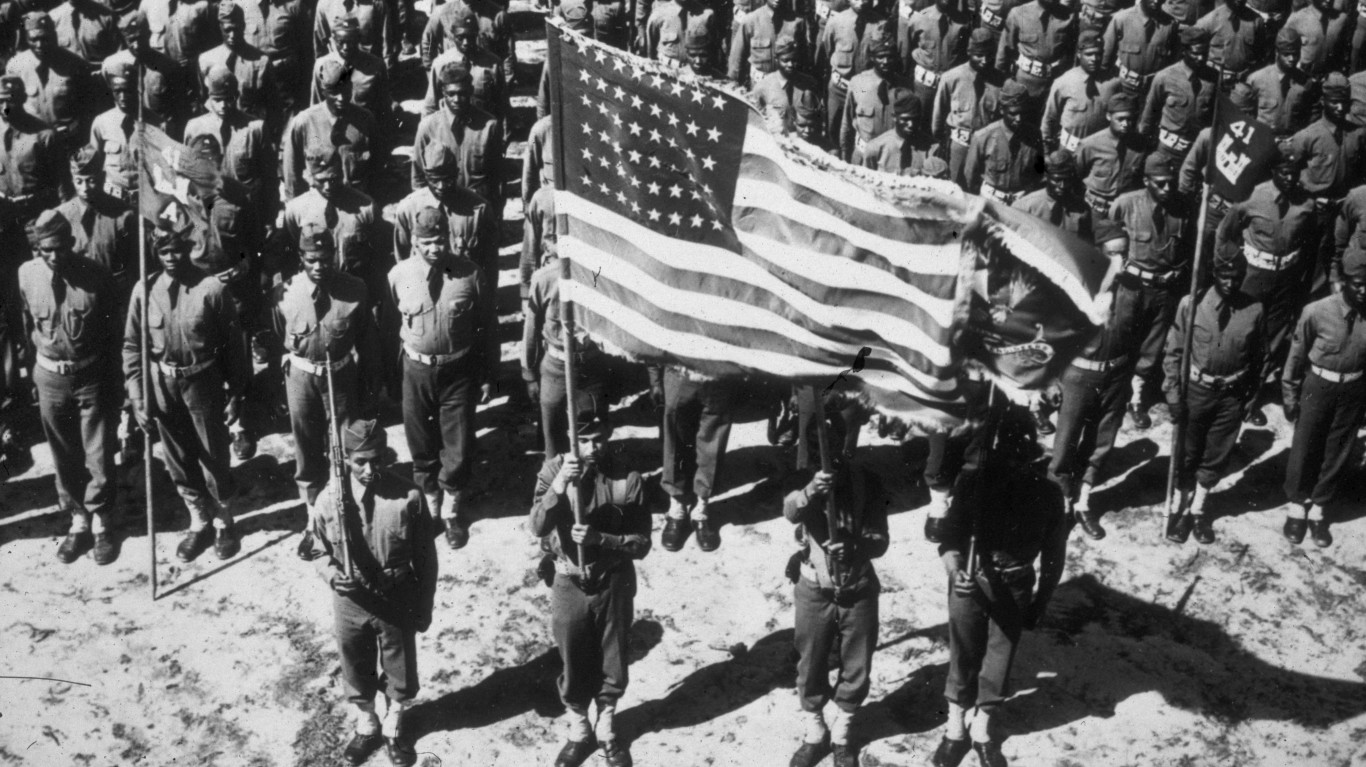
The first known fighting forces emerged in Mesopotamia, in what is now Iraq, close to 5,000 years ago. It is estimated that this prototype army numbered a few thousand trained soldiers, about the size of one modern U.S. Army brigade. (This is every rank in the U.S. Army.)
For as long as humans have been able to sharpen sticks and stones, they have fought each other over resources such as land and water or for a many other reasons, including religion, ideology, or independence. But it is not until antiquity that humans began forming what could be considered standing armies. Over the centuries, they have ranged wildly in size from small militias to continent-wide hordes.
To review the evolution in the size of military forces over the years, 24/7 Wall St. reviewed several sources that specialize in history or military. We ended with a compilation of some of the most impressive forces throughout the years. Many of the armies to make this list have total personnel counts that are relatively small compared to later, much larger armies. Still, these armies were unmatched in size and strength at their time. It is important to note that army sizes, even for more modern times, are often estimates and that different sources often have widely diverging estimates.
It was not until the 13th century B.C., in Egypt, that history showed evidence of an army of at least 100,000. It would take more than 2,700 years for the first million-strong standing army to emerge from China’s Ming Dynasty in the 15th century. Four centuries later, Napoleon Bonaparte would amass the largest army in history up to then. It would take seven nations and the death of millions of soldiers to end the 15-year Napoleonic Wars at the Battle of Waterloo.
Skip forward to the first half of the 20th century to find the largest armies ever amassed. At their peaks, the World War II armies of the U.S., Germany, and Russia easily topped 10 million troops in a six-year global conflict that pitted 70 million soldiers against one another and cost the lives of up to 50 million people, led by 18 million Russians, 5.8 million Poles, and 4.8 million Germans. (These are the wars with over 1 million battle deaths.)
Today’s armies are small in comparison. Though some sources maintain India has the largest army, others maintain The People’s Republic of China has the largest armed forces. Either way, both would be smaller than the German forces of World War I.
Here are 15 of the largest armies in world history
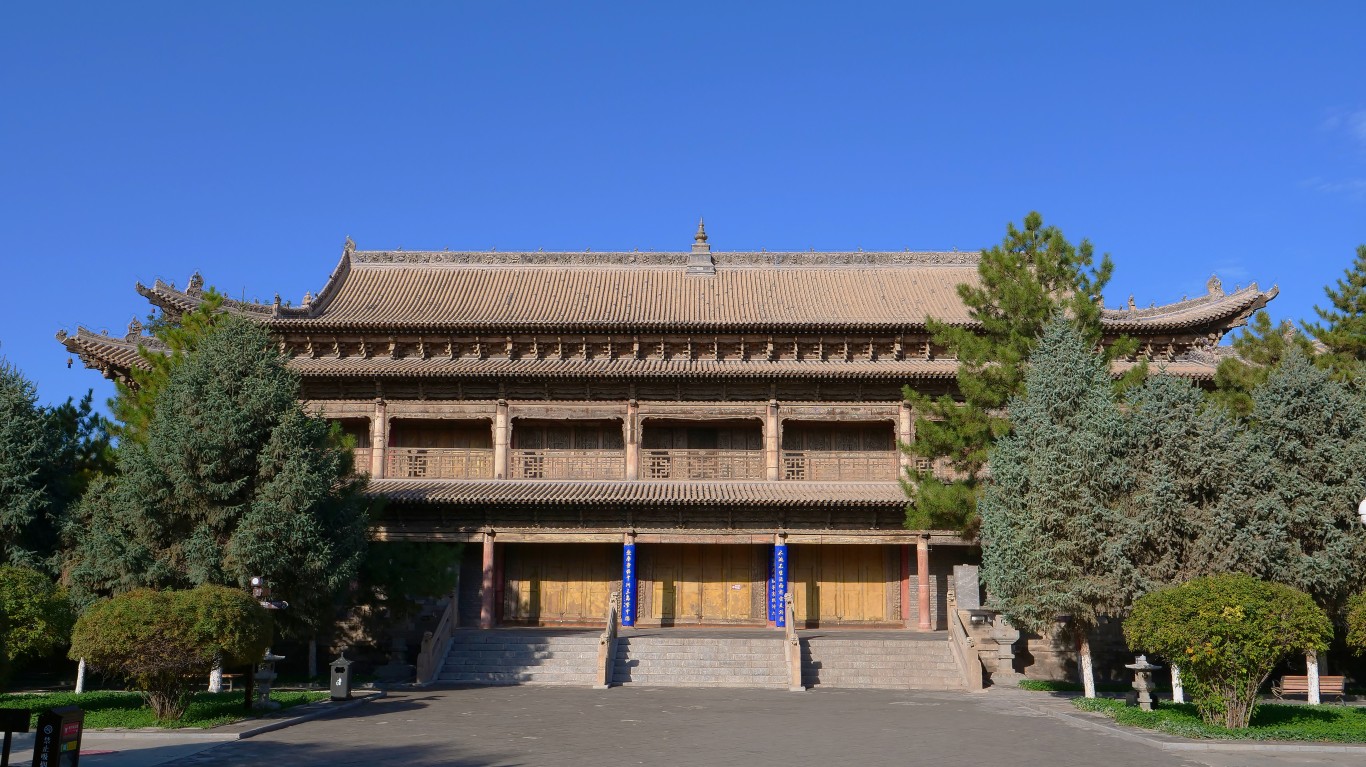
1. The Xia Dynasty
> Estimated active personnel: 12,000
> Date: 2000 B.C.
Located in what is modern-day inland northern China, the earliest Chinese dynasty maintained what is believed to have been the first fighting force in history to top 10,000 soldiers. The only Bronze Age army that came close to this was the Uruks of Mesopotamia, whose army is estimated to have numbered approximately 4,000 troops a millennium earlier.
[in-text-ad]

2. The Army of Ramses II
> Estimated active personnel: 100,000
> Date: 1250 B.C.
Ramses II is believed by many scholars to be the pharaoh referred to in the Exodus story of the Old Testament – the one who, according to the Hebrew Bible, sent chariot warriors to pursue Moses and the fleeing Jews only to be drowned in the Red Sea. The historical Ramses II certainly had a large army used to secure the borders of his empire against nomadic invaders, to battle the Hittites of Anatolia, and to beat back the Sea Peoples who were raiding in the Eastern Mediterranean.
3. The Persian Army of Cyrus the Great
> Estimated active personnel: 500,000
> Date: 600 B.C.
The First Persian Empire stretched from Libya to Central Asia and included Egypt, Anatolia (Turkey), and parts of northern India. At its peak, it had a population of 49.5 million people. Using his skills in military strategy and benevolence toward those he conquered, Cyrus the Great expanded his ancestral homeland in Iran into this massive empire, growing his army to 500,000 soldiers — the first armed force to reach that benchmark.
4. Mauryan Empire
> Estimated active personnel: 630,000
> Date: 3rd century B.C.
It would take about 200 years after Cyrus the Great of Persia for a second army to emerge with an estimated 500,000 soldiers. This time it was the Mauryan Empire, founded by Chandragupta Maurya in the wake of the destruction left by Alexander the Great in India’s Punjab region. The empire made up most of the subcontinent and maintained relative peace among the local kingdoms for more than a century.
[in-text-ad-2]
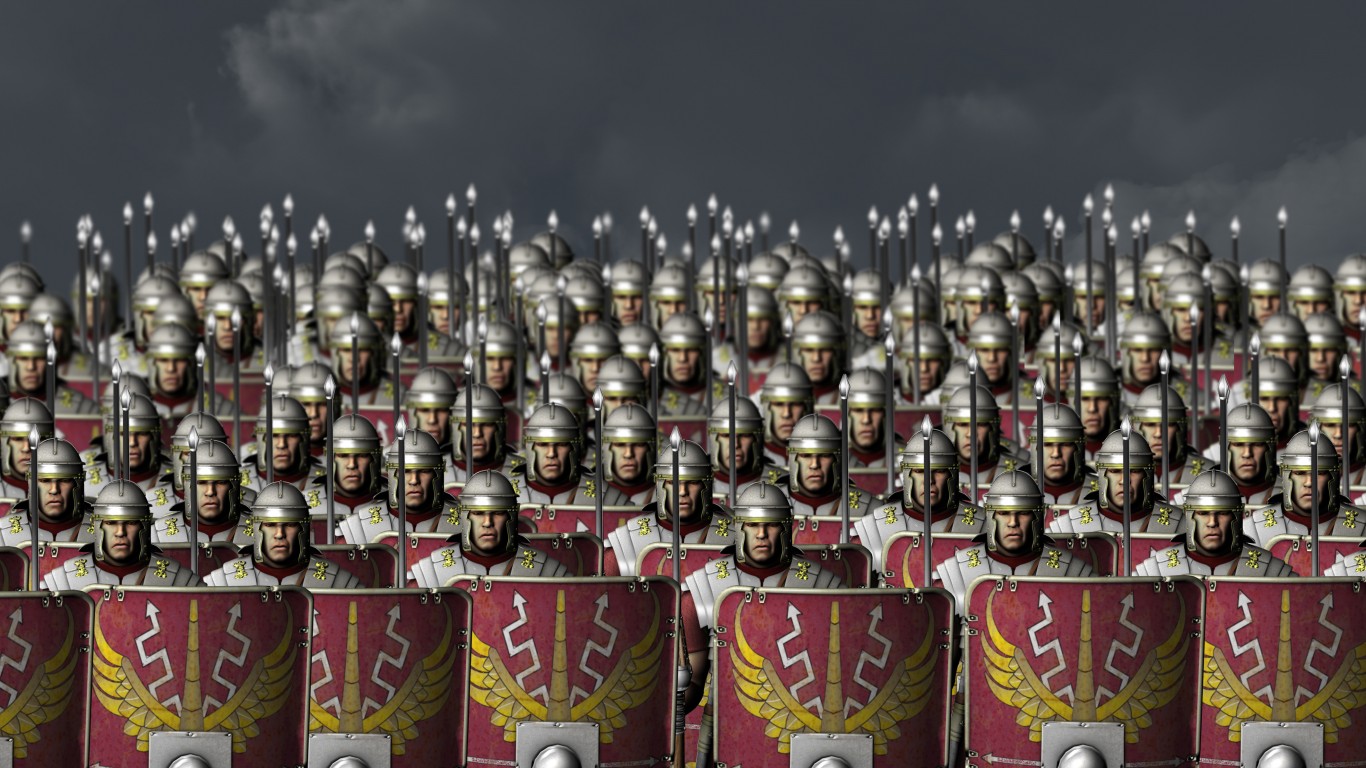
5. The Roman Army
> Estimated active personnel: 500,000
> Date: first century A.D.
Estimates vary considerably regarding the size of the Roman Army at its peak, and 500,000 is considered at the upper end of the estimate range. Part of this variation is due to the way the Roman Empire classified soldiers. Local native non-Roman units could join with the imperial army, and non-citizen inhabitants of the Roman Empire could be auxiliaries, but only Roman citizens could be members of core elite legions.
6. The Tang Dynasty
> Estimated active personnel: 634,000
> Date: 9th century A.D.
China’s Tang Dynasty, known for having a cosmopolitan outlook, expanded across a massive territory gained by military campaigns of the earliest rulers of the period. The first army to top 600,000 troops was built on a system known as Fubing, which included conscripting fighters to serve one month out of every five or two months out of every eighteen based on how far they lived from the capital. But this system could only supply the military for short campaigns and it eventually collapsed.
[in-text-ad]
7. Gengkis Khan’s Mongol Horde
> Estimated active personnel: 240,000
> Date: 13th century A.D.
Estimates vary widely on the size of Genghis Khan’s army, with some claims of a million fighters. The Mongols were pastoral nomads, so it is possible the high-end estimates are based on the size of Mongol encampments. A typical Mongol siege on a city or stronghold started with far fewer soldiers, about three to five divisions of 10,000 men behind a line of horsemen deftly deploying their distinctive composite bows. Mongol fighting tactics included mounted couriers on the battlefront and a complex signaling system that allowed for highly flexible maneuvering, including retreating and regrouping.
8. The Ming Dynasty
> Estimated active personnel: 1 million
> Date: 15th century A.D.
China’s Ming Dynasty that emerged following the harsh rule of the Mongol Yuan dynasty had, at its height, the first million-soldier army. It was indisputably the largest armed force in the world at the time, including a massive naval force. In the early 15th century, Ming emperor Zhu Di pointed his army south to conquer what is Vietnam today.
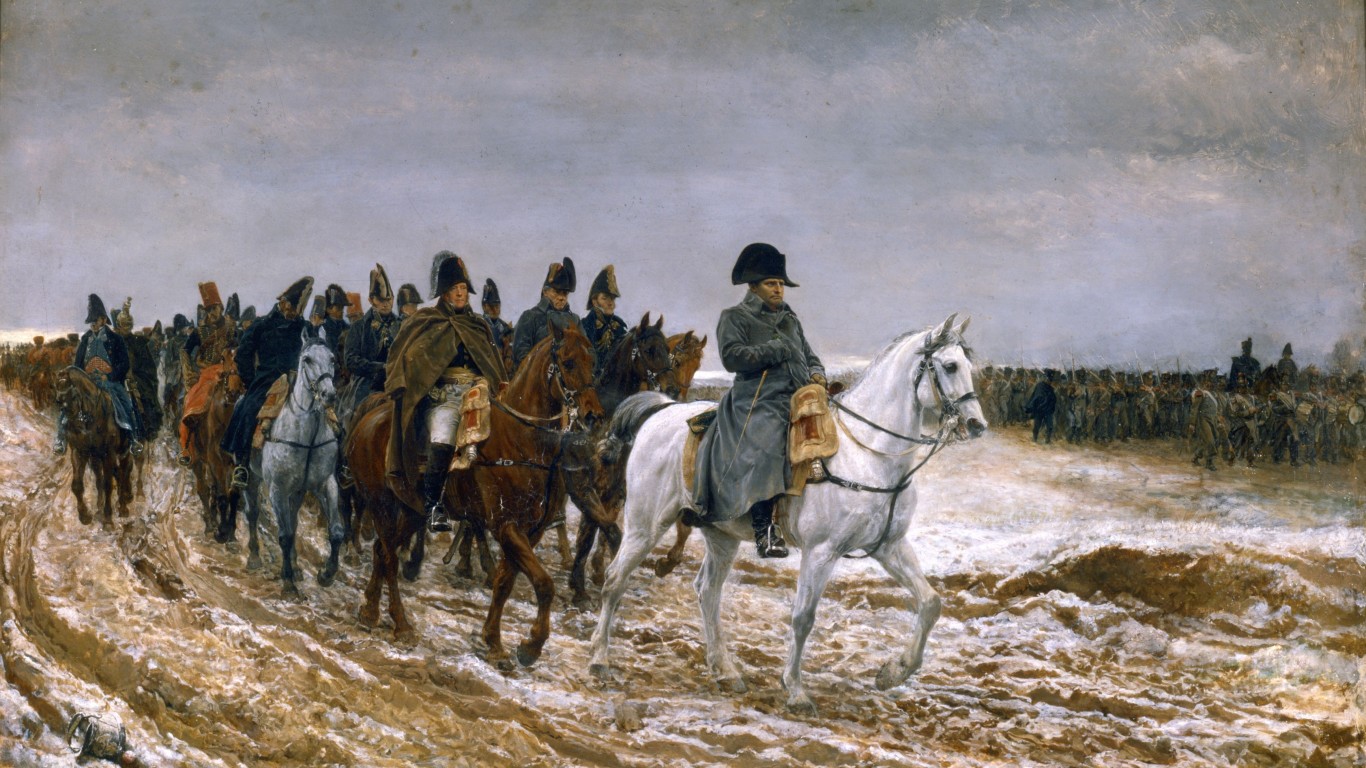
9. Napoleon’s Army
> Estimated active personnel: 2.5 million
> Date: 1800-1815
Napoleon Bonaparte’s march across Europe was enabled by conscription, allowing the Corsican conqueror to deploy an army larger than today’s Chinese armed forces. The Napoleonic Wars raged for 12 years, and combat deaths from these battles are estimated to have been between 2.5 million and 3.5 million soldiers. France, Britain, Russia, Prussia, Austria, Spain, and Portugal each lost more than 100,000 fighters battling Napoleon’s forces.
[in-text-ad-2]
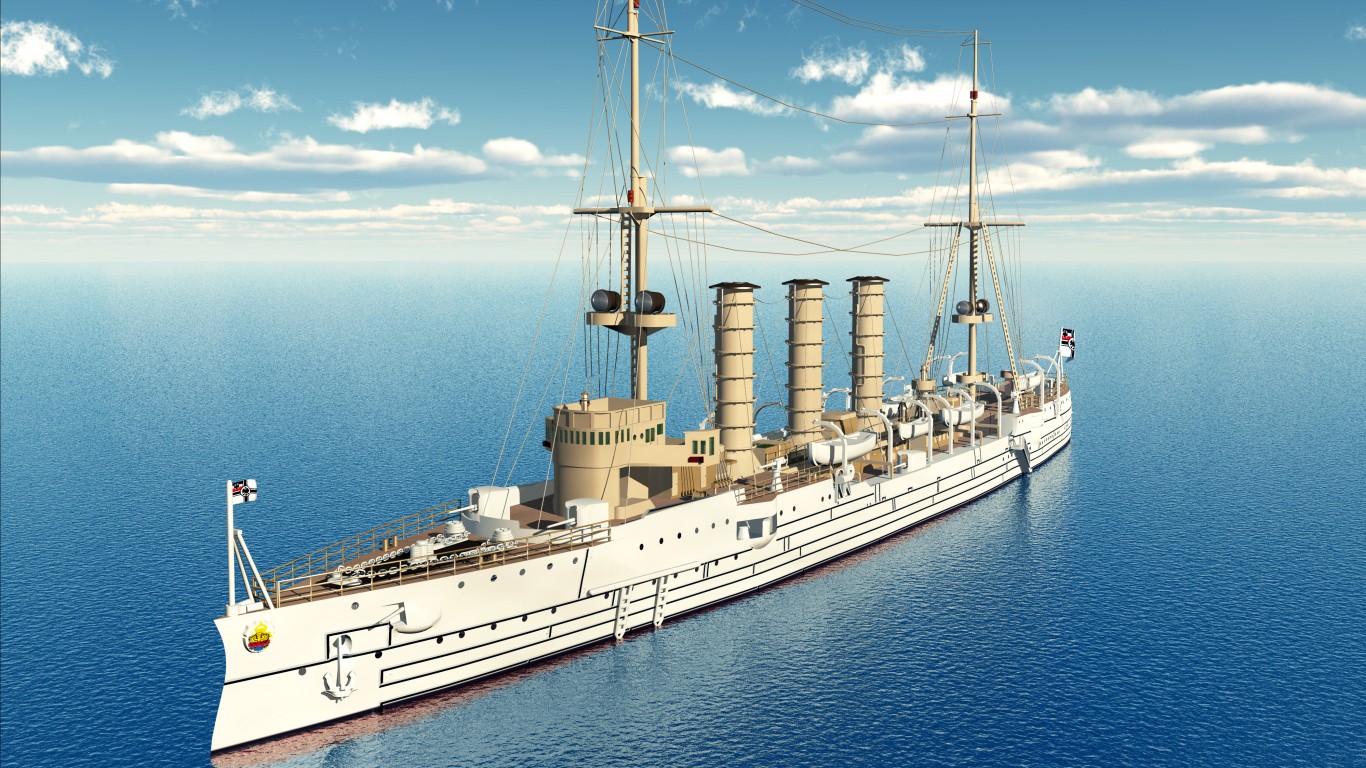
10. The German Empire of World War I
> Estimated active personnel: 5.3 million
> Date: 1914-1918
At the outset of World War I in 1914, the five Allied Powers vastly outnumbered the Central Powers, with a combined 3.2 million troops versus Austria-Hungary’s 450,000 and the Wehrmacht’s 1.9 million soldiers. But as the war quickly escalated, as did the number of soldiers.
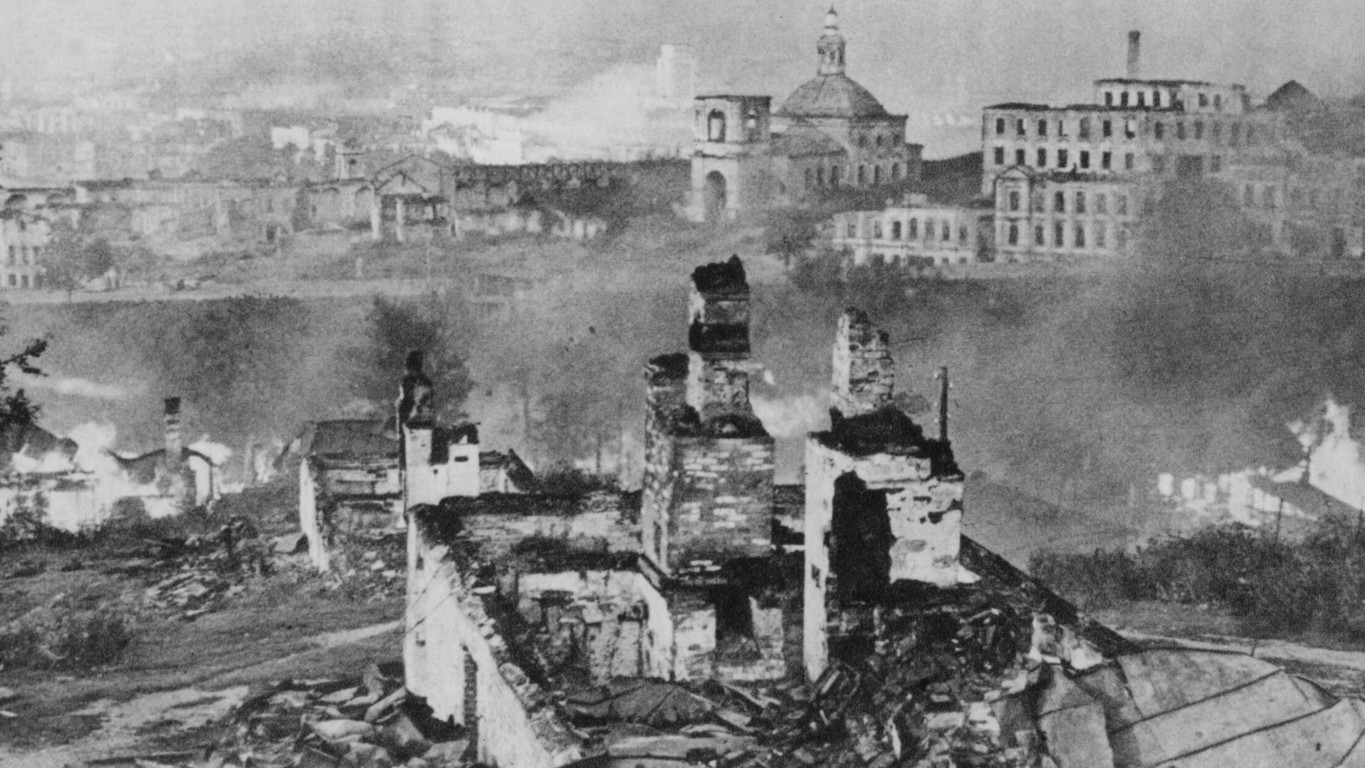
11. The Soviet Union in World War II
> Estimated active personnel: 11 million
> Date: 1943
The Germans invaded Poland on Sept. 1, 1939, with nearly 1.8 million troops. By the summer of 1943, about 4 million Axis fighters, mostly Germans, were battling more than 6.7 million Russians. At its peak strength, the Soviet Union had an estimated 11 million soldiers in 1943, though some estimates put Russian troop strength as high as 13.2 million at its peak. The Soviets lost between 8 million and over 10 million soldiers beating back the Germans and playing a crucial role in defeating the Axis.
[in-text-ad]

12. The Third Reich
> Estimated active personnel: 12 million
> Date: 1944
Estimates vary about the size of the Nazi forces at its peak during World War II. We know that about 4 million Axis fighters, most of whom were German, were sent by Hitler to invade Russia. The Third Reich is estimated to have had a fighting army of 12.1 million at its peak in 1944.

13. The United States Army in World War II
> Estimated active personnel: 12.2 million
> Date: 1945
At the onset of World War II, the United States had a small standing army, but it would rapidly grow as it became clear the U.S. would need to get involved in the global conflict, especially following the bombing of Pearl Harbor. By 1945, the U.S. Armed Forces had grown to 12.2 million.
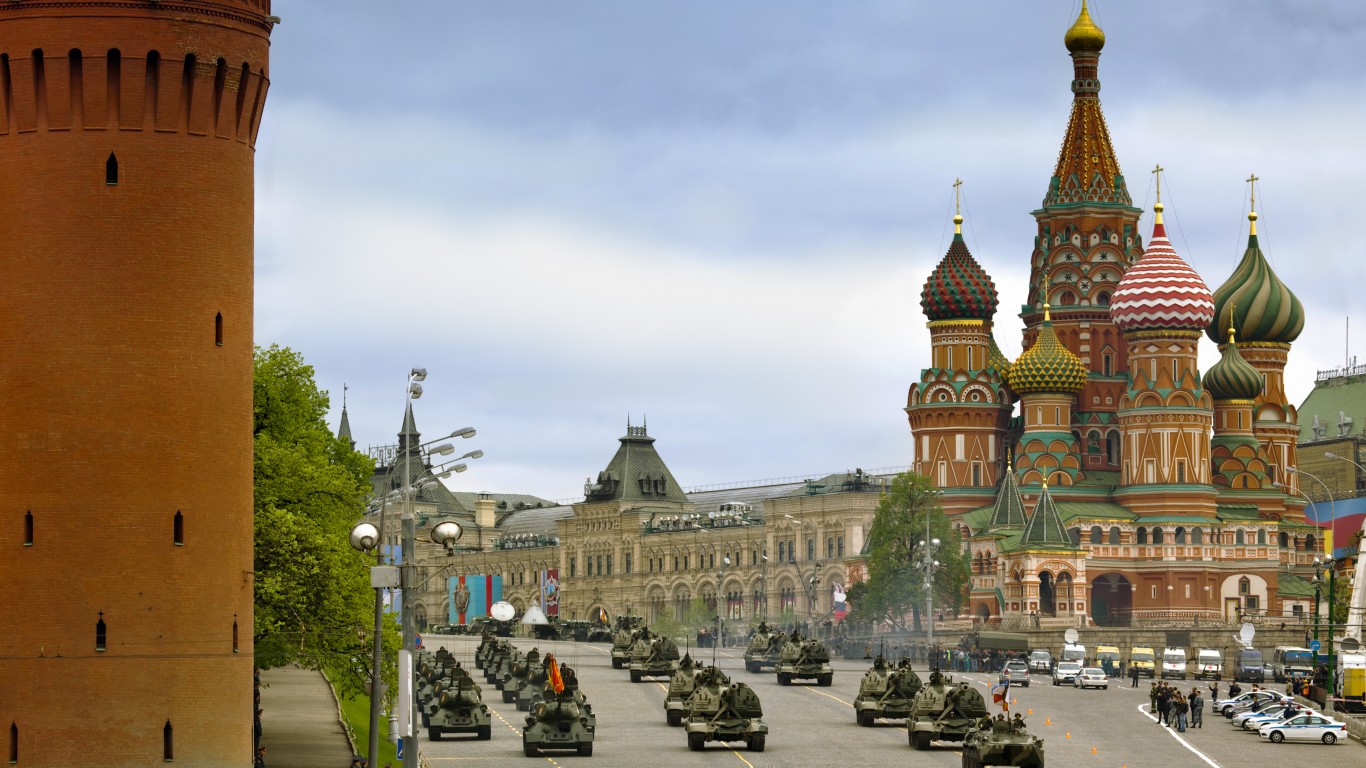
14. Soviet Military
> Estimated active personnel: 4.5 million
> Date: 1981
World War II saw a historical peak in the number of soldiers fighting in that years-long global conflict. Since then, the size of standing or fighting armies has shrunk considerably. In 1981, the world’s largest army was under the control of the Soviet Union, which at the time had commenced its invasion of Afghanistan.
[in-text-ad-2]
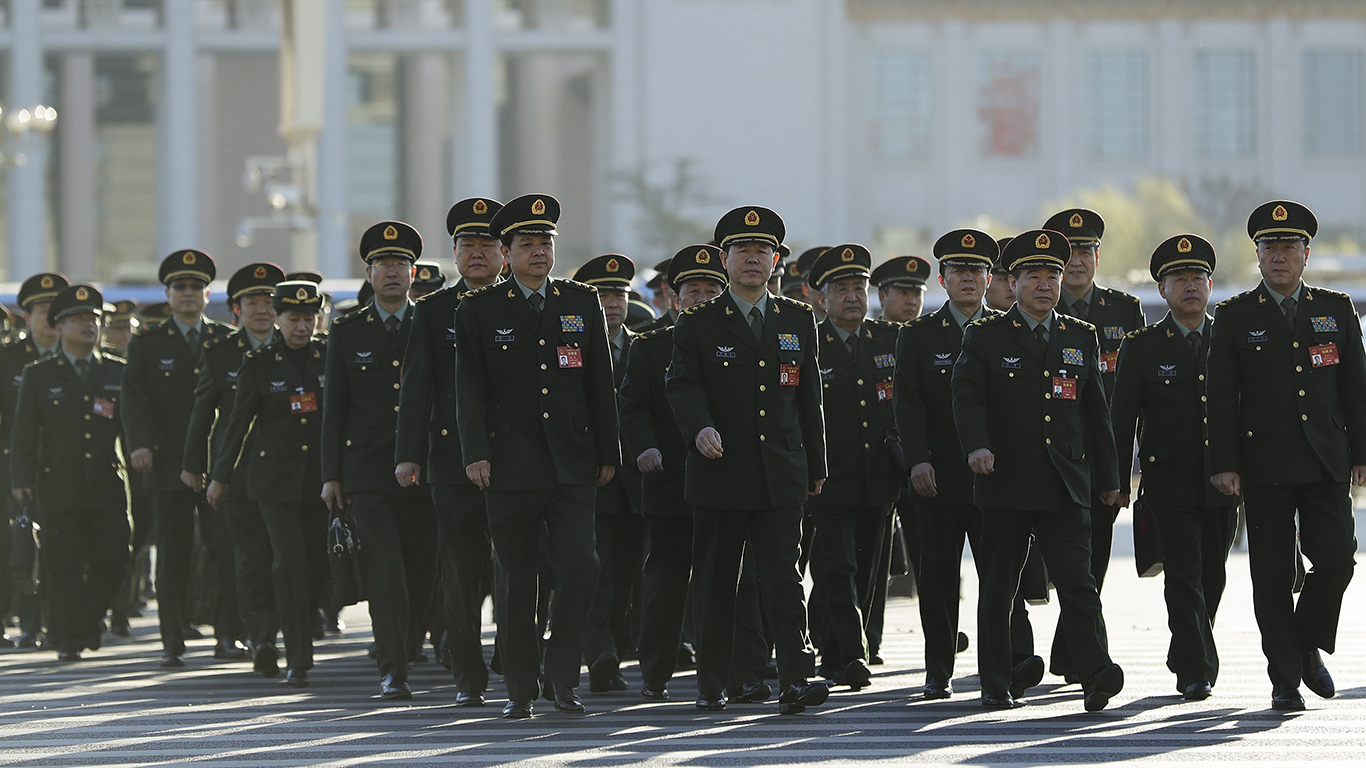
15. The Modern Chinese Army
> Estimated active personnel: 2.2 million
> Date: 2022
The largest number of active-duty personnel in the world today belongs to the People’s Republic of China. The world’s largest country by population has been asserting its territorial boundaries in the South China Sea, angering regional neighbors. It also maintains détente with India, has an ongoing dispute with Japan over a group of islands, and is on guard against any efforts regarding Taiwanese independence.
Thank you for reading! Have some feedback for us?
Contact the 24/7 Wall St. editorial team.
 24/7 Wall St.
24/7 Wall St.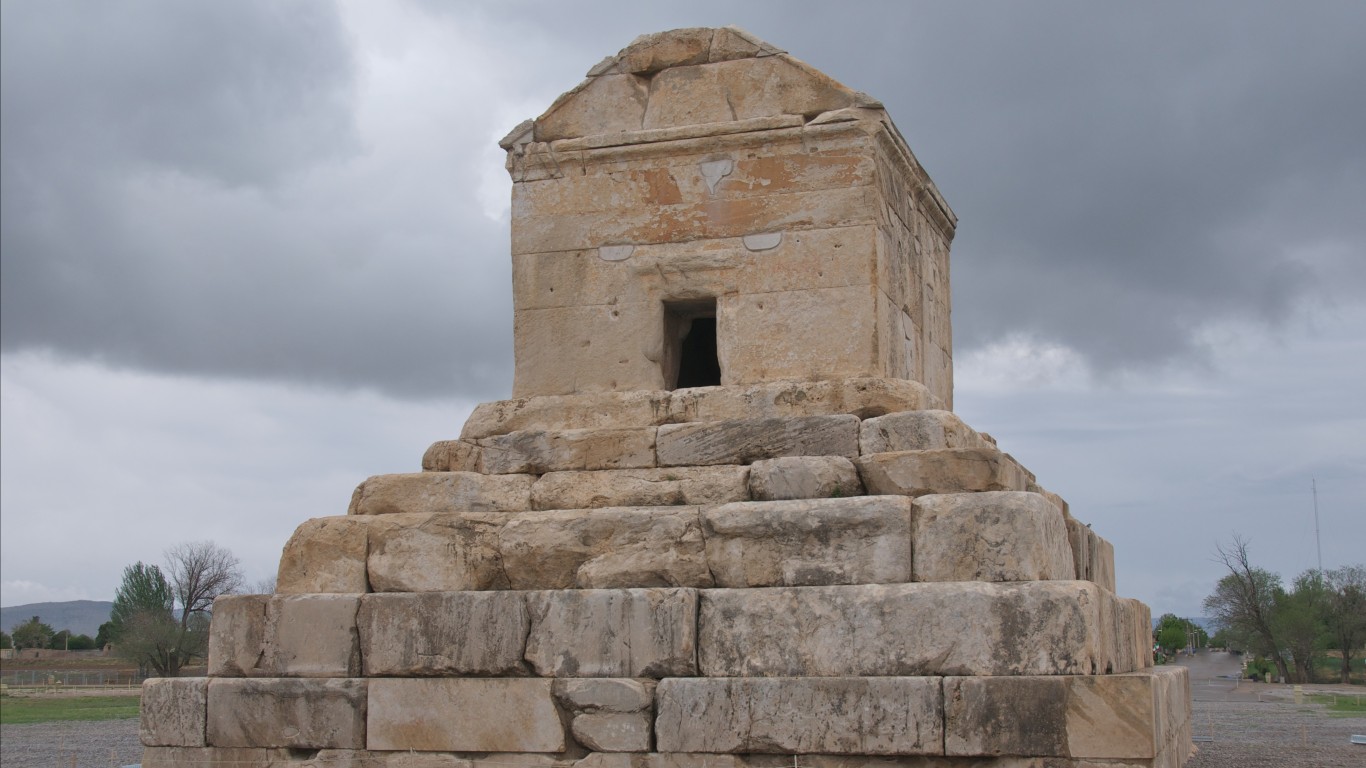
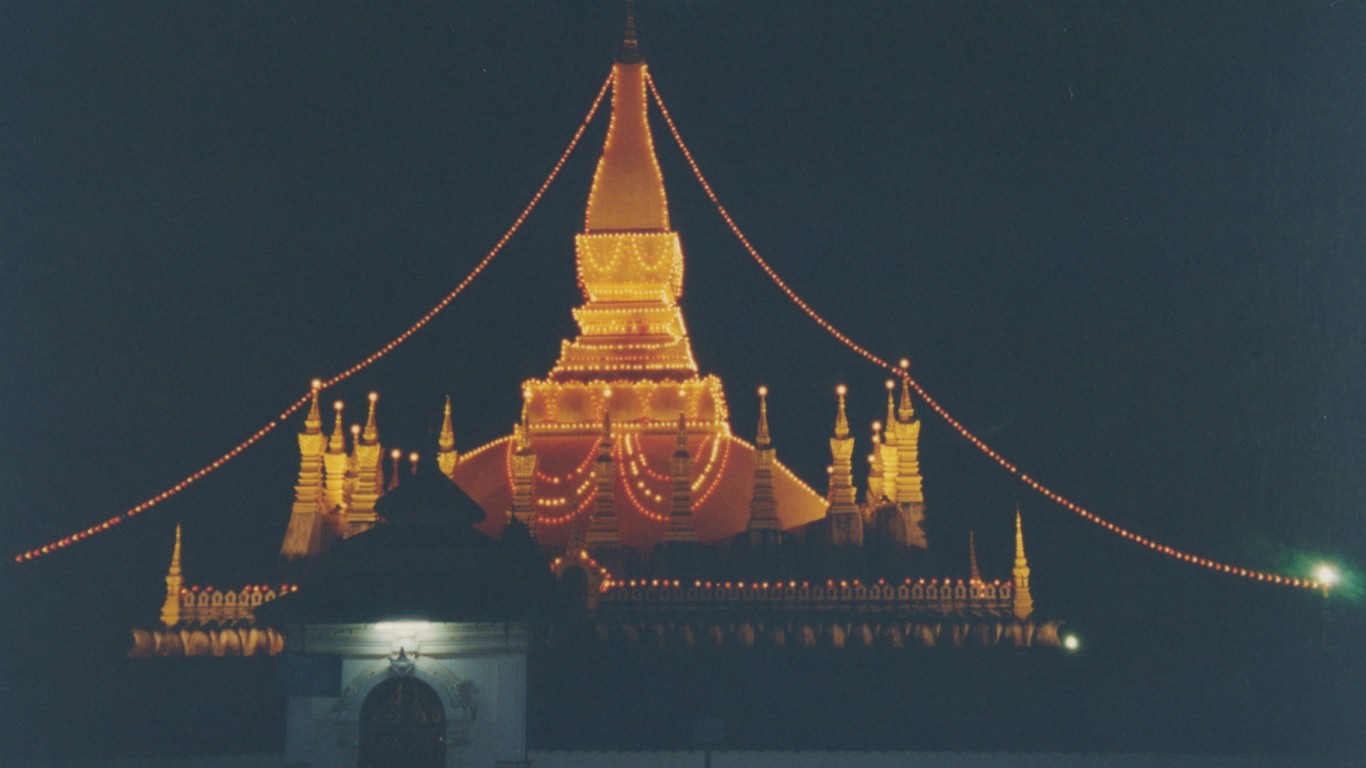
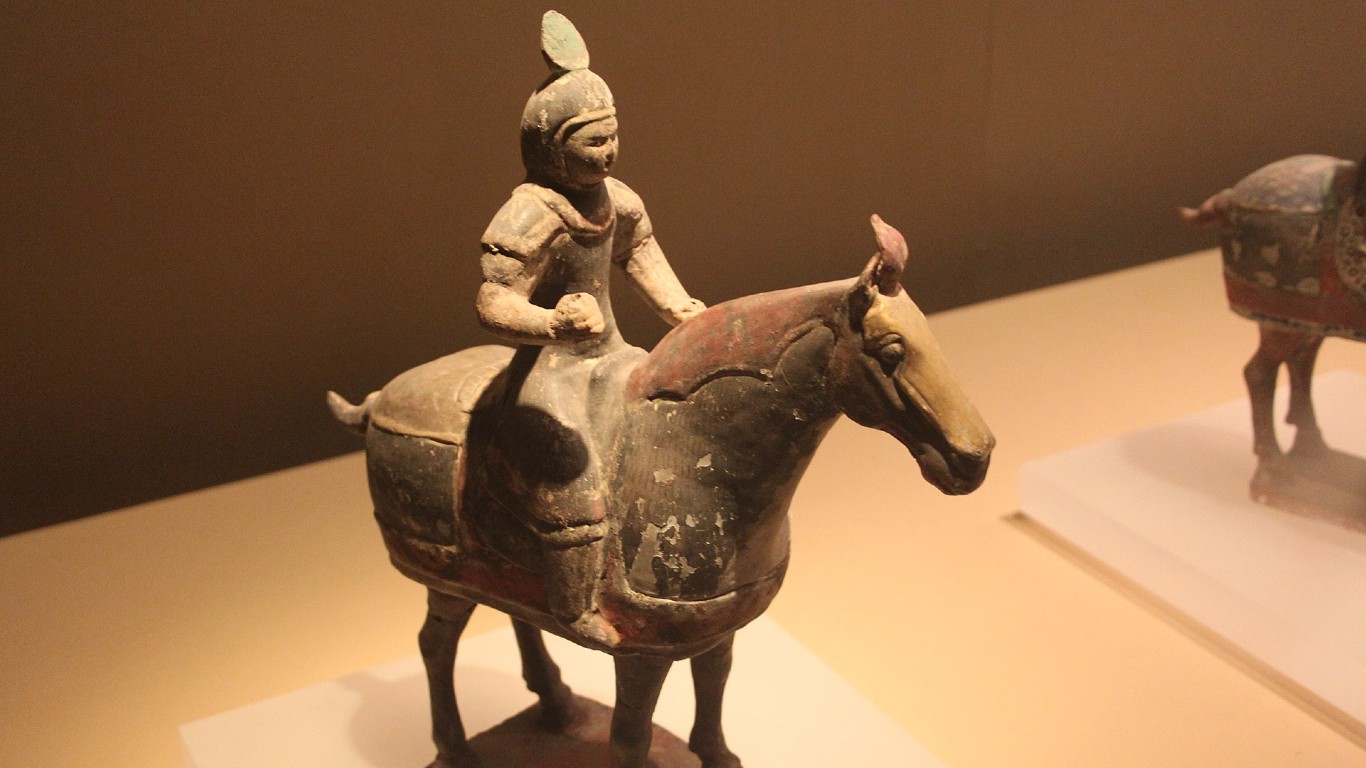
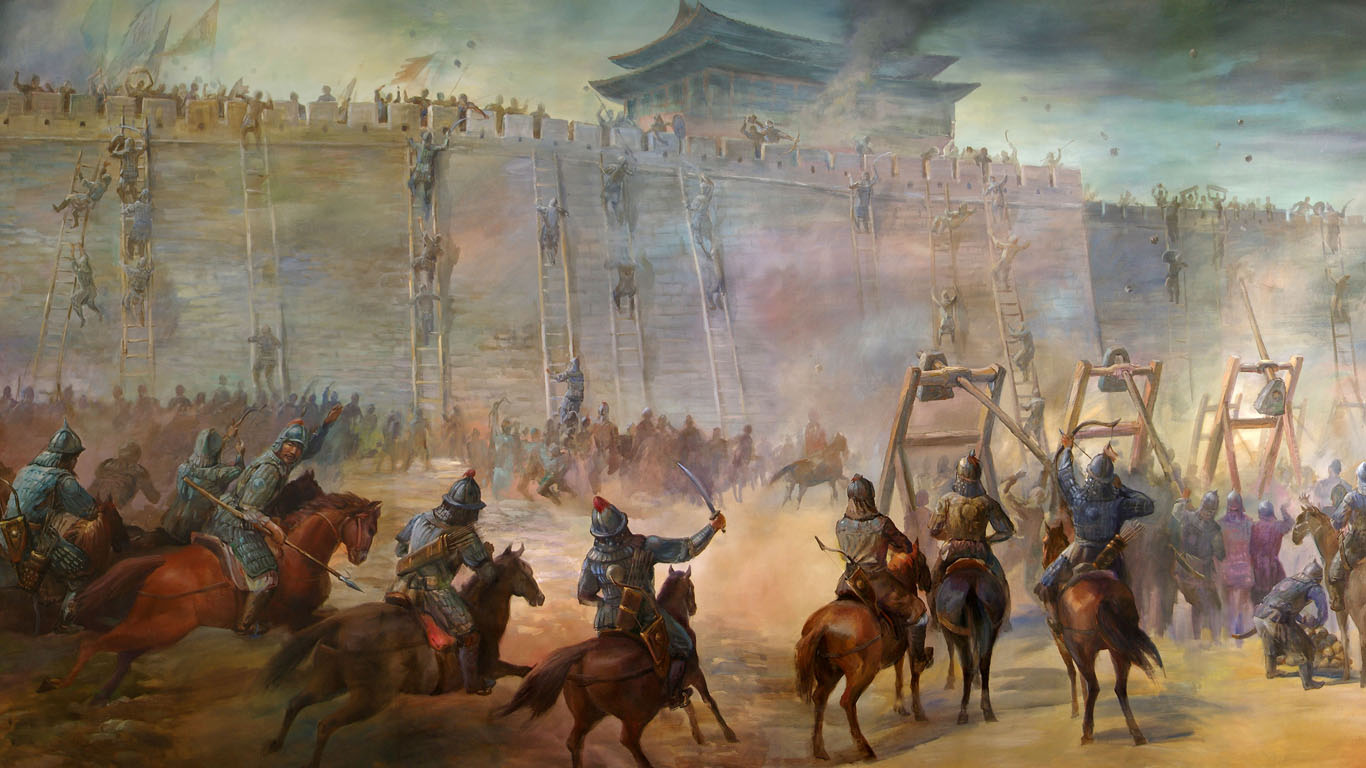
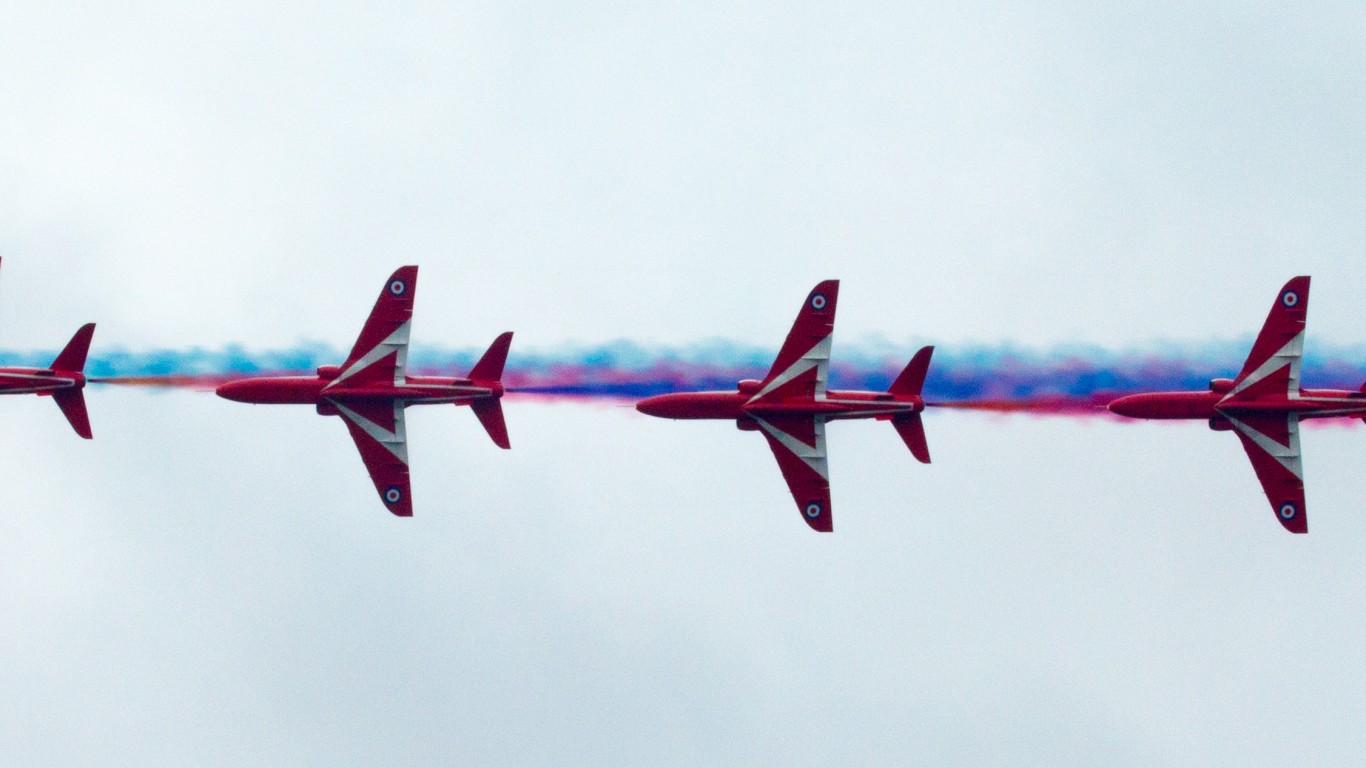 24/7 Wall St.
24/7 Wall St.
